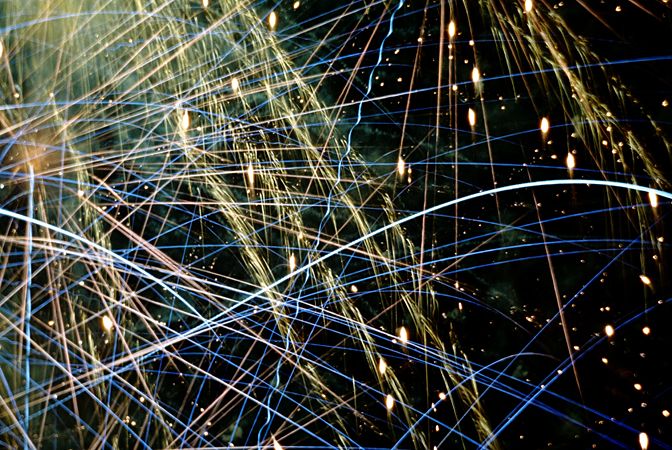
|
Credit & Copyright: Jim Steele
Explanation:
Experimenting with a new telescope and camera, photographer Jim Steele
captured this surreal but festive image of fireworks in
the night sky above
Ashland, Oregon.
The date was July 4th
and the fiery streaks were part of the
traditional annual celebration of independence day in the
United States.
Fiery streaks from another annual event will revisit
dark skies
this weekend, as
shooting stars arc through the night
during the much
anticipated Perseid Meteor Shower.
Perseid meteors are actually bits of dust from the periodic
Comet Swift-Tuttle
and once each year planet Earth orbits through Swift-Tuttle's
cometary dust stream.
As the comet dust enters Earth's atmosphere traveling
at tens of kilometers per second, the particles are vaporized
leaving bright
and sometimes colorful trails.
While Perseid meteors can be viewed over
the next few nights,
this year's shower is expected to peak
on August 12 and 13 with a rate of dozens
or more meteors per hour visible in moonless early morning skies.
|
January February March April May June July August September October November December |
| ||||||||||||||||||||||||||||||||||||||||||||||||
NASA Web Site Statements, Warnings, and Disclaimers
NASA Official: Jay Norris. Specific rights apply.
A service of: LHEA at NASA / GSFC
& Michigan Tech. U.
Based on Astronomy Picture
Of the Day
Publications with keywords: Perseids - meteor shower
Publications with words: Perseids - meteor shower
See also:
- APOD: 2025 August 21 Á Mostly Perseids
- APOD: 2025 August 20 Á Perseid Meteors from Durdle Door
- APOD: 2025 August 12 Á Perseids from Perseus
- APOD: 2025 August 3 Á Milky Way and Exploding Meteor
- APOD: 2024 December 10 Á The Great Meteor Storm of 1833
- APOD: 2024 August 12 Á Perseid Meteors over Stonehenge
- APOD: 2024 August 11 Á Animation: Perseid Meteor Shower
